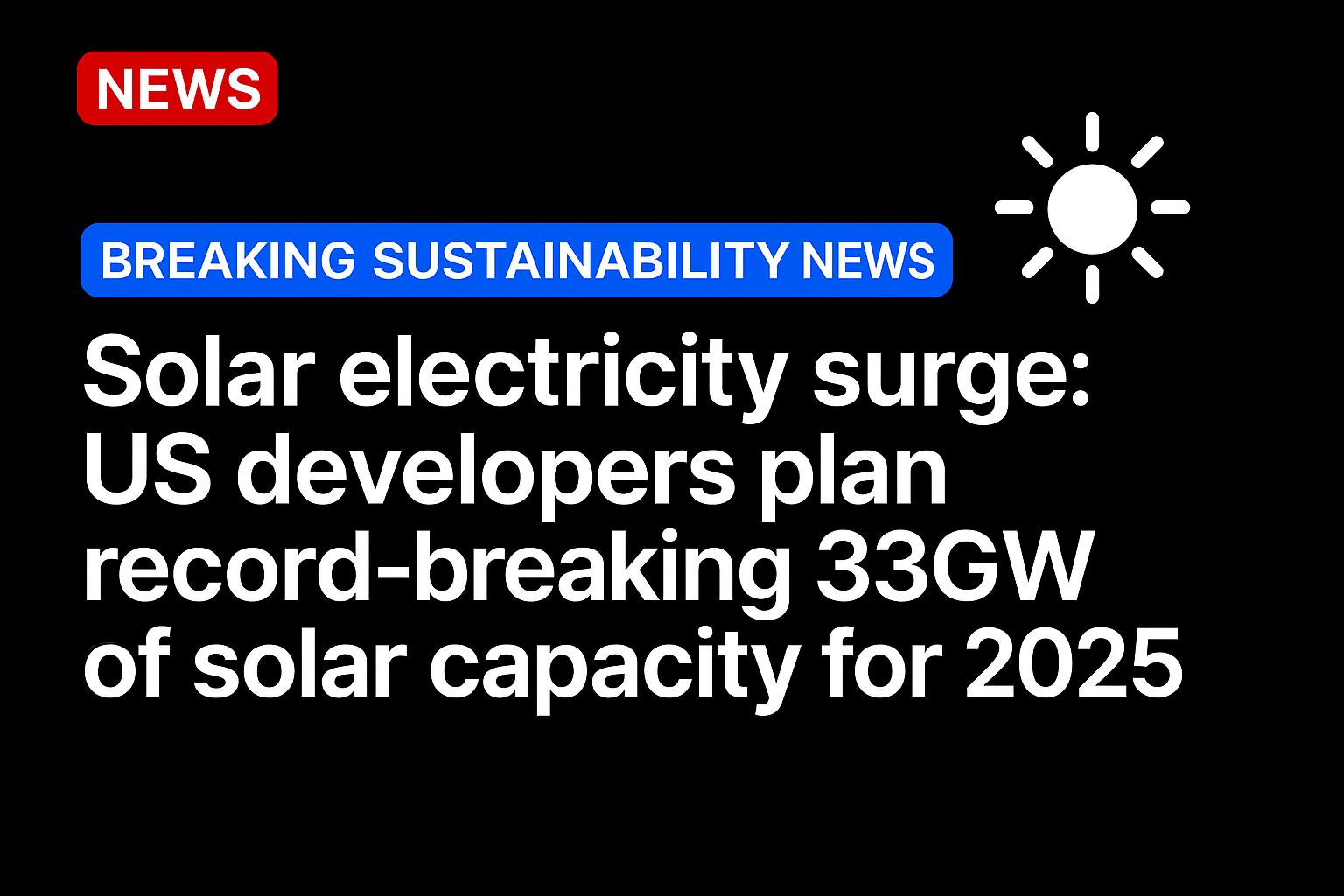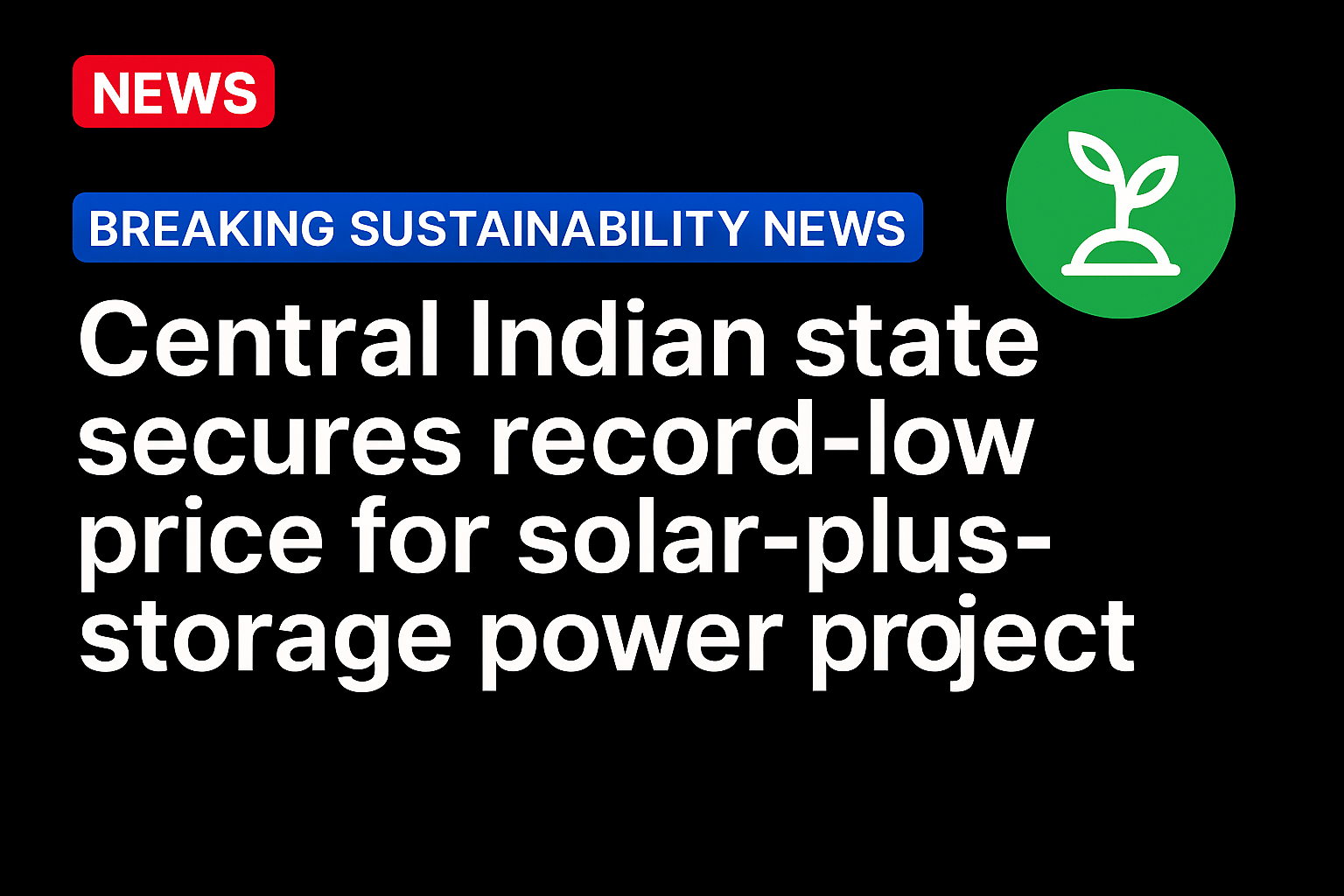Half of America’s new power generation this year could come from solar photovoltaic installations, marking a shift in the nation’s energy infrastructure.
Solar electricity is poised to dominate America’s energy expansion in 2025, with developers planning to add 33 gigawatts (GW) of solar photovoltaic capacity – representing more than half of the 64 GW of new generating capacity planned for the year. The surge positions solar as the leading technology in the nation’s ongoing energy transition, according to thelatest datafrom the US Energy Information Administration (EIA).
The scale of the expansion becomes clear when examining the numbers: developers have already installed 12 GW of utility-scale solar capacity during the first six months of 2025, with an additional 21 GW planned for the remainder of the year. If realised, it would mark the largest annual addition of solar electricity generation capacity in US history.
Breaking previous records

The planned 64 GW of total new capacity additions for 2025 would surpass the previous record set in 2002, when developers added 58 GW to the grid – though that earlier milestone was achieved almost entirely through natural gas installations (57 GW).
This contrast highlights how dramatically the energy landscape has evolved over the past two decades, with renewable technologies and energy storage now leading the expansion of capacity. Battery storage technology is claiming the second-largest share of new additions, accounting for 18.3 GW or approximately 29% of planned capacity.
Wind power follows with 7.8 GW, while natural gas – once the dominant technology for new capacity – accounts for just 4.7 GW of planned additions in 2025.
Texas emerges as solar powerhouse
The geographic distribution of solar electricity development reveals significant regional patterns, with Texas leading. The state accounts for 27% of solar capacity added in the first half of 2025 (3.2 GW) and plans to bring an additional 9.7 GW online by year-end. This momentum helped Texas surpass California in 2024 as the state with the most utility-scale solar capacity, a shift redolent with symbolism for America’s renewable energy sector.
Texas is also driving the battery storage expansion, with developers planning to install 7.0 GW of storage capacity in 2025, much of it scheduled for the second half of the year. The dual focus on solar electricity generation and storage infrastructure reflects the state’s comprehensive approach to renewable energy integration.
Arizona and California continue to play significant roles in the battery storage sector, accounting for approximately half of the 5.9 GW of storage capacity installed during the first six months of 2025.
Retirement patterns signal transition
The data reveals not only what’s being added but also what’s being retired. Of the 8.7 GW of electric generating capacity that operators plan to retire during 2025, coal-fired power plants will account for 71% of retirements, followed by natural gas at 19%. However, actual retirements have proceeded more slowly than initially planned, with only 2.0 GW retired in the first half of the year.
Notably, more than 3.6 GW of planned retirements have been delayed or cancelled, including significant coal and natural gas facilities in Maryland and Texas. The delays suggest that grid reliability concerns and market conditions may be influencing retirement timelines, even as new renewable capacity comes online.

Market dynamics and policy implications
The solar electricity boom reflects several converging factors, including continued cost reductions in solar technology, supportive federal and state policies, and growing corporate demand for renewable energy.
The substantial investment in battery storage alongside solar installations addresses one of the traditional challenges of renewable energy – intermittency – by providing the capability to store excess generation for use when the sun isn’t shining.
The scale of capacity additions planned for 2025 also highlights the increasing speed of energy infrastructure deployment. Modern solar installations can be developed and constructed more rapidly than traditional fossil fuel plants, letting developers respond quickly to market opportunities and policy incentives.
What’s next: Infrastructure and integration challenges
While the growth in solar electricity capacity represents a significant achievement for renewable energy, it also presents integration challenges for grid operators. Managing a power system with increasing shares of variable renewable generation requires sophisticated forecasting, flexible resources, and robust transmission infrastructure.
The concentration of new capacity in states like Texas underscores the importance of regional transmission networks and interstate cooperation in managing renewable energy resources effectively. As solar becomes a larger share of the generation mix, ensuring grid reliability during periods of low solar output becomes increasingly critical.
Overall, when solar electricity accounts for half of all new capacity additions, the question shifts from whether renewables will transform the American grid to how quickly the transformation will accelerate. The numbers tell a story of momentum that may prove unstoppable.
Texas alone is adding more solar capacity in 2025 than the entire country typically installed just a decade ago. Meanwhile, coal plants – once the backbone of American electricity – are slated to be retired at an unprecedented pace, with delays in some closures serving only to underscore the economic pressures facing fossil fuel generation.
Yet perhaps the most significant development lies in what isn’t happening: there’s no grand government mandate driving this shift. Instead, economics and technology have aligned to make solar electricity not just environmentally preferable, but financially inevitable.
Developers are choosing solar because it makes business sense, utilities are embracing battery storage because it solves real operational challenges, and states like Texas are leading because they recognise an economic opportunity.
The transformation will ripple far beyond the electricity sector. As America builds the infrastructure for a solar-dominated grid, it’s also building the foundation for widespread electrification of transportation, heating, and industrial processes.
Source: https://sustainability-news.net/




